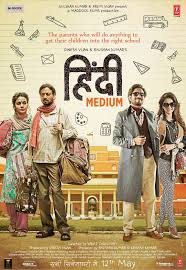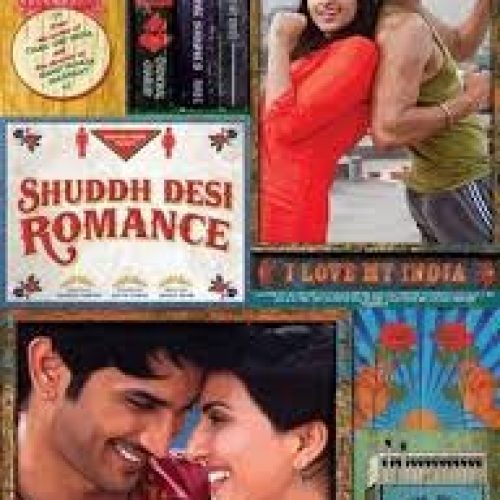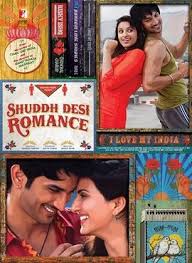Sometimes, a film comes along that blends humor, emotion, and social commentary so seamlessly that it resonates on multiple levels. Starring Irrfan Khan, Saba Qamar, and Deepak Dobriyal, this film is set in modern-day Delhi, where the sprawling metropolis becomes a backdrop for the contrasting worlds of the rich and the middle class. Directed by Saket Chaudhary, it falls under the genre of comedy-drama, with a keen focus on the Indian education system and social hierarchies.
The story follows Raj and Mita, a couple from Chandni Chowk who aspire to secure a spot for their daughter in one of Delhi’s elite English-medium schools. Despite their financial success through Raj’s garment business, they are acutely aware of the perceived inferiority of their “Hindi-medium” background. To fit into the elite world, they go to extraordinary lengths, even pretending to be poor, to get their daughter admitted through a government quota. The plot cleverly dissects the obsession with English-language education in India and the desperation of parents to give their children a leg up in the competitive world.
One of the film’s standout aspects is the impeccable acting, particularly from Irrfan. Known for his subtlety and range, Irrfan delivers a performance that balances comedy and emotion with effortless charm. As Raj, a man who is caught between his roots and the pressure to conform to a more “acceptable” upper-class lifestyle, Irrfan’s portrayal brings a grounded realism to the character. His comedic timing, especially in scenes where he tries to navigate the snobbery of the upper crust, is spot on, but it’s his emotional vulnerability that truly captivates. Saba, as Mita, brings a perfect contrast to Irrfan’s laid-back Raj. Her portrayal of a mother driven by insecurities and the fear of her child being left behind is both compelling and relatable. Together, the couple’s on-screen chemistry is genuine, making their struggles both humorous and heart-wrenching.
Another key aspect of the film is the direction by Saket, who manages to handle a sensitive subject with humor and grace. Rather than turning the film into a preachy commentary on class disparity, Saket focuses on the nuances of the characters’ journeys. The screenplay, written by Zeenat Lakhani and Saket Chaudhary, is packed with witty dialogues that emphasize the absurdity of the elitism surrounding English-speaking schools. It’s the little details, such as Raj and Mita’s awkward attempts at learning English or navigating the world of wealthy parents, that bring out the charm in the storytelling. Editing by A. Sreekar Prasad keeps the narrative tight and engaging, especially in balancing the humor and the underlying critique of social systems.
The music, composed by Sachin-Jigar, adds a pleasant rhythm to the film, complementing its emotional arcs. The soundtrack, while not the central focus, enhances key moments, especially songs like “Ek Jindari,” which underline the film’s emotional core. The background score subtly shifts to match the tone of the film, whether it’s highlighting a comedic exchange or adding depth to the more serious themes. The cinematography by Laxman Utekar effectively captures the contrasting worlds of Delhi’s middle class and the elite, from the bustling lanes of Chandni Chowk to the pristine facades of upscale neighborhoods. The use of light and framing during emotional scenes, particularly those set in the couple’s modest home, further emphasizes the contrast in lifestyles without overtly drawing attention to it.
One of the most striking elements of the film is its critique of the Indian education system and the larger societal obsession with English as a marker of class and intelligence. The narrative does an excellent job of showcasing how people from different economic backgrounds approach education, with Raj and Mita representing the middle class who view English as the key to social mobility, while Deepak’s character, Shyam, represents those on the lower end of the spectrum who struggle just to meet basic needs but still dream of giving their children a better life. The film smartly points out the irony that the rich can afford the best education while the poor must rely on quotas or face endless hurdles, and the middle class remains stuck in between, trying to game the system.
The costume design by Aki Narula also plays a subtle but significant role in highlighting class distinctions. Raj’s transformation from a flashy, traditional businessman to a more refined, “English” version of himself is mirrored in his clothing, while Mita’s wardrobe reflects her attempt to fit into the elite crowd. The attention to detail in the characters’ appearances adds another layer of storytelling, particularly when they attempt to disguise themselves as part of the lower economic strata.
Overall, the film is a clever and heartwarming satire that strikes a balance between entertainment and social commentary. Irrfan’s performance alone makes the film worth watching, but the layers of humor, emotion, and critique of societal norms make it more than just a comedy. It touches on real issues faced by parents in urban India, shedding light on the pressures of fitting into a classist system and the lengths people go to for the sake of their children’s future. While the film does not offer any sweeping solutions, it raises important questions about identity, privilege, and the absurdity of equating language proficiency with success.
For those looking for a film that’s both entertaining and thought-provoking, this one is a must-watch. With its sharp writing, strong performances, and a storyline that’s both relatable and engaging, it offers more than just laughs — it leaves you thinking long after the credits roll. Highly recommended for anyone who enjoys socially relevant cinema that doesn’t take itself too seriously but still packs an emotional punch.







